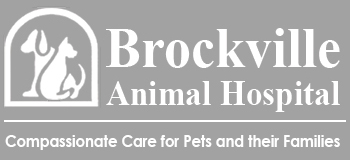Library
-
A herder through and through, the Pyr Shep is an energetic dog that needs a job. They become very attached to their owners, with a keen sense of their mood.
-
Pyrethrin insecticides are naturally derived from the chrysanthemum (mum) flower, and pyrethroids are the synthetic versions. The use of pyrethrins/pyrethroids is generally safe in dogs; however, cats and fish are very sensitive to these products.
-
Pyrethrin insecticides are naturally derived from the Chrysanthemum (mum) species of flower, and pyrethroids are the synthetic versions. The use of pyrethrins/pyrethroids is generally safe in dogs; however, cats and fish are very sensitive to these products.
-
Pythiosis is a waterborne infection that can infect the GI tract or skin of dogs. It can cause extreme weight loss, vomiting, diarrhea or skin lesions such as ulcerating nodules and draining tracts. This disease is more common in southern regions. Treatment involves surgical removal of all affected material if possible, including limb amputation if indicated. Different antifungal therapies have shown some efficacy and need to be continued long-term. Prognosis for resolution of pythiosis is guarded to poor.
-
Quaker parrots are small- to medium-sized birds. They are green with a grey chest and neck. They make great pets if hand-tamed. Quaker parrots can be excellent talkers and tend to bond closely to one or two household members.
-
Quality of life is a way to refer to and discuss the day-to-day life and lifestyle of a cat reaching the end of its life. A quality-of-life scale for cats can help owners and veterinarians work together to maintain a healthy human-animal bond. The scale looks at seven different categories including hurt, hunger, hydration, hygiene, happiness, mobility, more good days than bad. The scale can help clarify the decisions and anxiety related to your cat’s end of life care.
-
Quality of life is a way to refer to and discuss the day-to-day life and lifestyle of a cat reaching the end of its life. A quality-of-life scale for cats can help owners and veterinarians work together to maintain a healthy human-animal bond. The scale looks at seven different categories including hurt, hunger, hydration, hygiene, happiness, mobility, more good days than bad. The scale can help clarify the decisions and anxiety related to your dog’s end of life care.
-
Rabbits can make wonderful pets for those willing to understand their unique characteristics and needs. They are very intelligent and always adorable, but require special handling and more supervision than some other pet species. As it is with all pets, though, rabbits require a healthy diet, lots of activity, social interaction, and routine veterinary care to live happy and healthy lives.
-
Most cats care for their kittens with little need for human intervention; if they do not, then their caregivers need to step in. It is critical to maintain a warm environment and ensure they receive enough milk. Kittens’ weight should be checked daily in the first two weeks and any prolonged crying should be investigated. Feeding can be supplemented with commercial milk replacer if needed. Further feeding and vaccination recommendations are discussed. Contact your veterinarian for specific instructions.
-
Most dogs care for their puppies with little need for human intervention; if they do not, then their caregivers need to step in. It is critical to maintain a warm environment and ensure they receive enough milk. Puppies’ weight should be checked daily in the first two weeks, and any prolonged crying should be investigated. Feeding can be supplemented with commercial milk replacer if needed. Further feeding and vaccination recommendations are discussed. Contact your veterinarian for specific recommendations.

